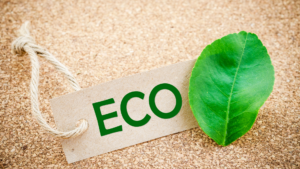Clover, Bean, and Seed Sprouts for Vibrant Living
Sprouting seeds have recently turned into a household name for those looking to improve their nutritional intake. They are incredibly versatile, easy to grow, and can be consumed raw or cooked all year round. As a result, the trend has taken off, with people trying out various seeds to sprout at home. Get ready to upgrade your nutrition game with the top sprouting seeds you should be trying out today.

Alfalfa sprouts
Alfalfa sprouts are an excellent source of minerals such as calcium, magnesium, and potassium, which are crucial for muscle and bone health. Broccoli sprouts, on the other hand, are high in antioxidants and a good source of fiber, folic acid, and vitamins A, C, and K. Lentils contain the most protein among the sprouts and are very low in calories, making them a great addition to any diet or weight-loss program. Mung beans are high in protein, and
fiber, and rich in vitamin C, calcium, and iron.
Broccoli sprouts
Broccoli sprouts don’t taste like broccoli but add a mildly spicy, nutty flavor to any dish that needs a spicy flavor boost. They also add a beautiful pop of striking green color to your dishes.
Broccoli sprouts are sure to increase the nutritional intake of any dish and boost your overall health. They are high in antioxidants and a good source of fiber, folic acid, and vitamins A, C, and K.
You can expect edible-sized sprouts from seed after five days. Like alfalfa and other thin sprouts, you should eat them raw to maintain their nutritional structure and value.
Beet sprouts
Beet sprouts are more challenging to grow and take longer to sprout to edible form, between eleven to twenty-one days from seeds. But they are worth the wait!
They taste slightly earthy and sweet, very much like full-sized beets. Their striking hot pink stems and bright green leaves make any dish eye-catching.
Not only do they look gorgeous, but like all sprouts, they add nutrients such as Vit A, B, C, E, and K, and also iron, calcium, and protein.
chickpea sprouts
Beans such as chickpeas are sometimes difficult to digest, and sprouting helps to improve digestion.
They are also more protein-rich than other sprouts and are packed with many nutrients such as Vitamin C and iron.
Since chickpeas are larger, they must be soaked for longer and require more frequent rinsing and draining.
Chickpeas are one of the quickest beans to sprout; they will sprout in two days. Enjoy them raw in salads or cooked in soups and veggie burgers, or make delicious raw hummus.
Green peas sprouts
Green peas grow tasty, refreshing sprouts and have a sweet, mild flavor that adds crunch to salads or sandwiches.
They are packed with Vitamins A, B, and C and minerals such as calcium, iron, and phosphorous.
Green pea sprouts are larger than broccoli and alfalfa sprouts and take about the same time as mung bean sprouts to grow. You can harvest sprouted green peas within two to three days.
Due to their size, green peas need to soak longer and require more frequent rinsing and draining.
Kale sprouts
Kale sprouts have a unique shape with grey-green and violet-purple-toned veins. They provide a crisp texture with a sweet flavor and undertones of nuts, pepper, and classic brassica bite.
Kale sprouts are a good source of vitamin C, folic acid, calcium, and potassium and can be enjoyed both raw or cooked by lightly sauteeing them.
Also Read : Soothe Your Stomach: Unraveling the Mystery Behind Digestive Noises






